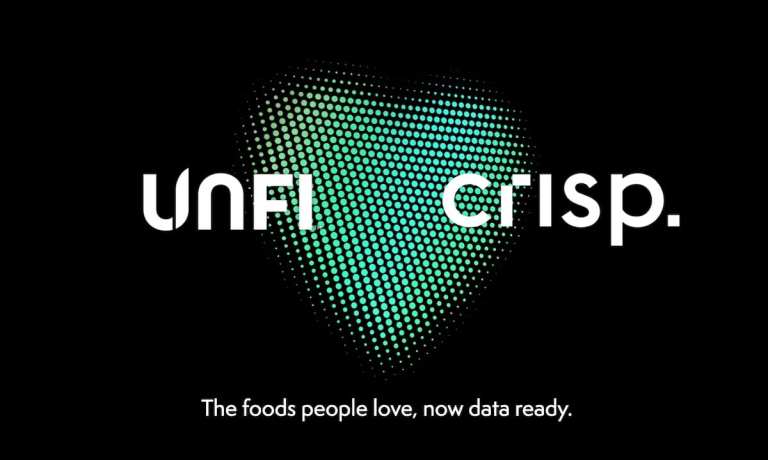
The food supply chain is due for an upgrade. Businesses and consumers alike are feeling the strain, with widespread shortages sending prices skyrocketing. Both the private and the public sector are doing what they can to address the industry. The Biden administration recently announced a multi-billion-dollar investment in strengthening the chain, as companies take a look at their own supply chains and seek to identify places where it can be bolstered.
Of course, to solve a problem, one needs to understand it. That’s where analytics come in. New York-based open data platform Crisp recently announced a partnership with United Natural Foods, Inc. (UNFI), the leading independent distributor of specialty foods in the United States, to give consumer-packaged-goods (CPG) food and beverage brands access to UNFI data. Of course, data visibility is only the first step.

Are Traasdahl, founder and CEO of Crisp
“Data is key for food and beverage brands to get a clear picture of their business as products move along the value chain, and it helps them make informed decisions that improve efficiency and grow in the market,” Are Traasdahl, founder and CEO of Crisp, told PYMNTS in an interview. “For many brands, the challenge is not the existence of data — it’s how to harness all that data to gain actionable insights in real time.”
Traasdahl added that Crisp’s solution “automat[es] the process of ingesting and aggregating retail and distributor data to bring important trends and insights to the surface,” turning the raw numbers into information that brands can actually make use of.
Teamwork Makes The Dream Work
One of the central ideas behind Crisp’s approach to data is that businesses function better when they work together. This need for cooperation is especially acute right now, with everyone feeling the impact of today’s supply chain constraints, and businesses can benefit from lessons learned throughout the pandemic thus far.
“The recent price changes and supply chain disruptions echo much of what we saw this past year with the pandemic,” said Traasdahl. “One trend we saw was that partners who collaborated and shared data with each other more successfully navigated these changes, and they could respond and deploy solutions faster.”
He noted that data sharing makes the entire supply chain “stronger and more agile,” which is especially necessary now, as businesses navigate the unpredictable conditions — “unprecedented demand, channel shifts, changing availability of raw materials and rapidly evolving purchasing patterns” — of today’s food supply chain.
The idea that companies can see data sharing as a benefit to all parties, rather than as a zero-sum game, is part of why UNFI chose to work with Crisp, Traasdahl said, noting that the food distributor “shares our vision that better visibility and insights lead to better business operations.”
The Central Tenets Of ‘Programmatic Commerce’
This sort of collaboration and data sharing helps to enable what Crisp describes as “programmatic commerce” — which, Traasdahl said, aims to “efficiently match supply with demand at speed and scale.”
One element of this is providing insight into “top-line trends like sales and distribution” — which helps retailers keep shelves stocked while helping brands meet demand — and it enables all involved to “spot new opportunities [to work] together to put products into the right stores.” Another element of this approach to commerce is monitoring inventory in real time to avoid both shortages and waste, preempting supply chain problems rather than having to scramble to address them post-facto.
“Finally, data helps create a more comprehensive view of the market and the consumer, so that everything from products to promotions in any location can deliver what consumers are looking for,” Traasdahl said.
By tailoring offerings both to the market and to the individual consumer, brands and retailers can drive a higher return on investment and stand out against competitors.
Democratizing Data For A Connected Supply Chain
Looking into the future, Traasdahl believes that the process will become increasingly tech-enabled. He predicted that leading players will be those that “leverage[e] big data, machine learning, AI and automation to enable faster decision-making, more accurate course corrections and more seamless coordination between all the moving pieces along the supply chain.”
Certainly, grocery is becoming automated. Take, for instance, the global proliferation of cashier-free grocery checkout, seamlessly integrating digital payments into the brick-and-mortar experience and enabling retailers, through the use of computer vision, to better understand consumers’ in-store behaviors. Conversely, digital integrations throughout the store, such as responsive displays, are allowing physical stores to provide many of the benefits of e-grocery to in-store shoppers.
These sorts of integrations can help guide the way toward the future Crisp envisions for grocery: “a truly 360º view of the consumer that creates a seamless experience across in-store and eCommerce.”
As much as these initiatives join the digital experience to the physical, Traasdahl believes that trends across the industry point toward the rise of the connected economy, with previously distinct categories working together, and with all players having access to this unified ecosystem.
“We have more data than ever before, and this will only continue to grow, increasingly enabled by cloud-based solutions,” said Traasdahl. “We see the breaking down of siloes leading to an interconnectedness of data that will greatly improve how food distribution operates.”